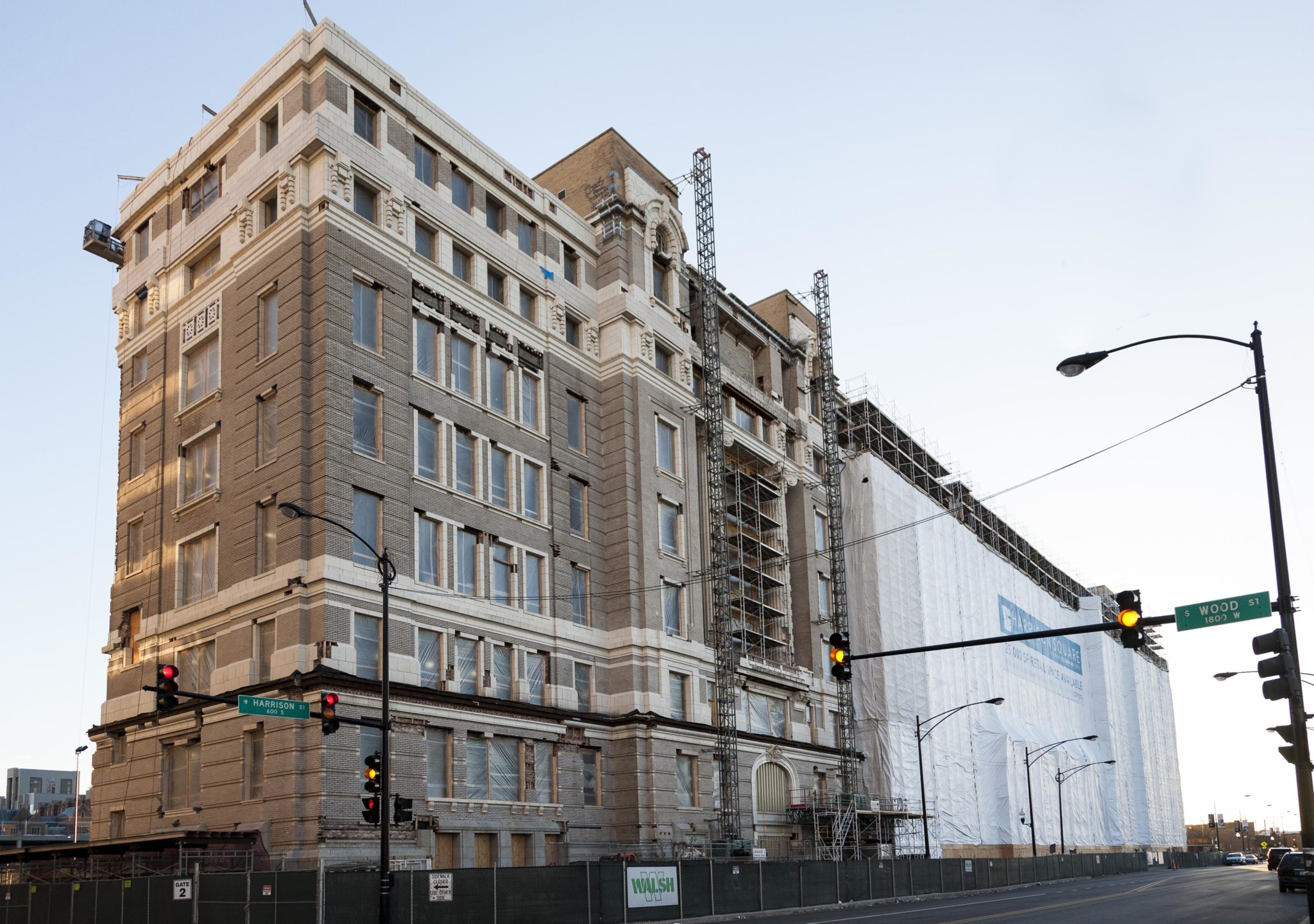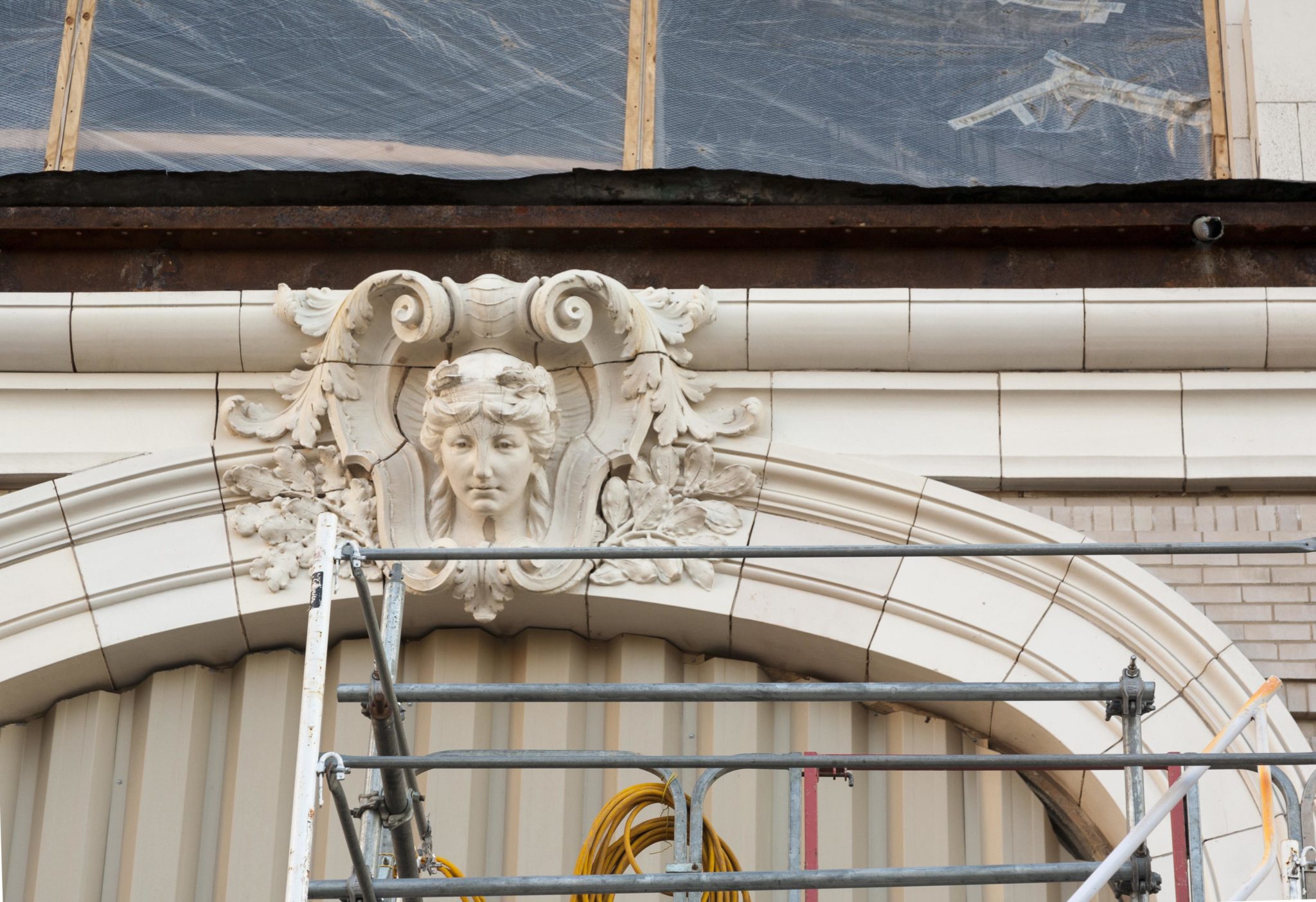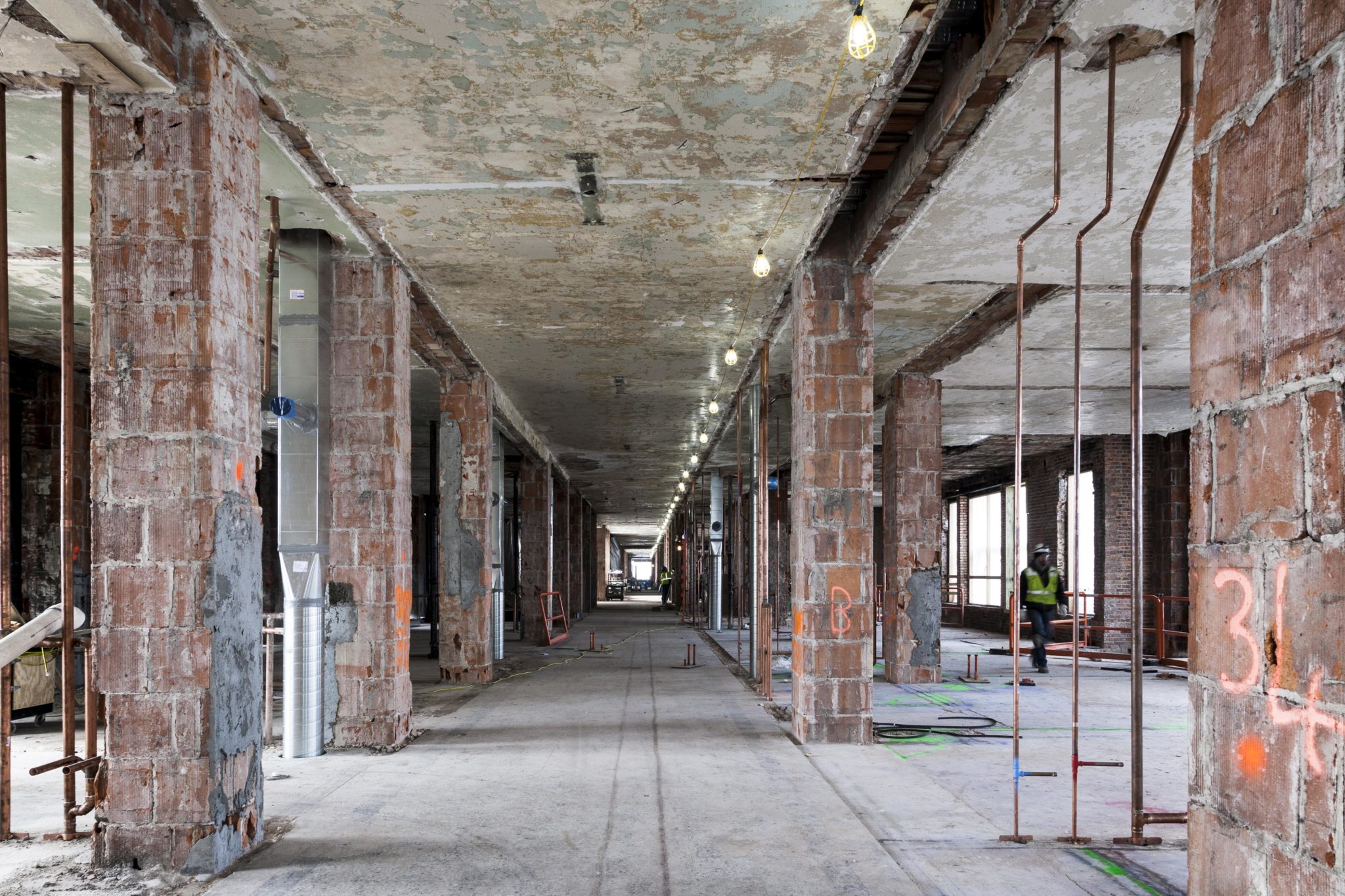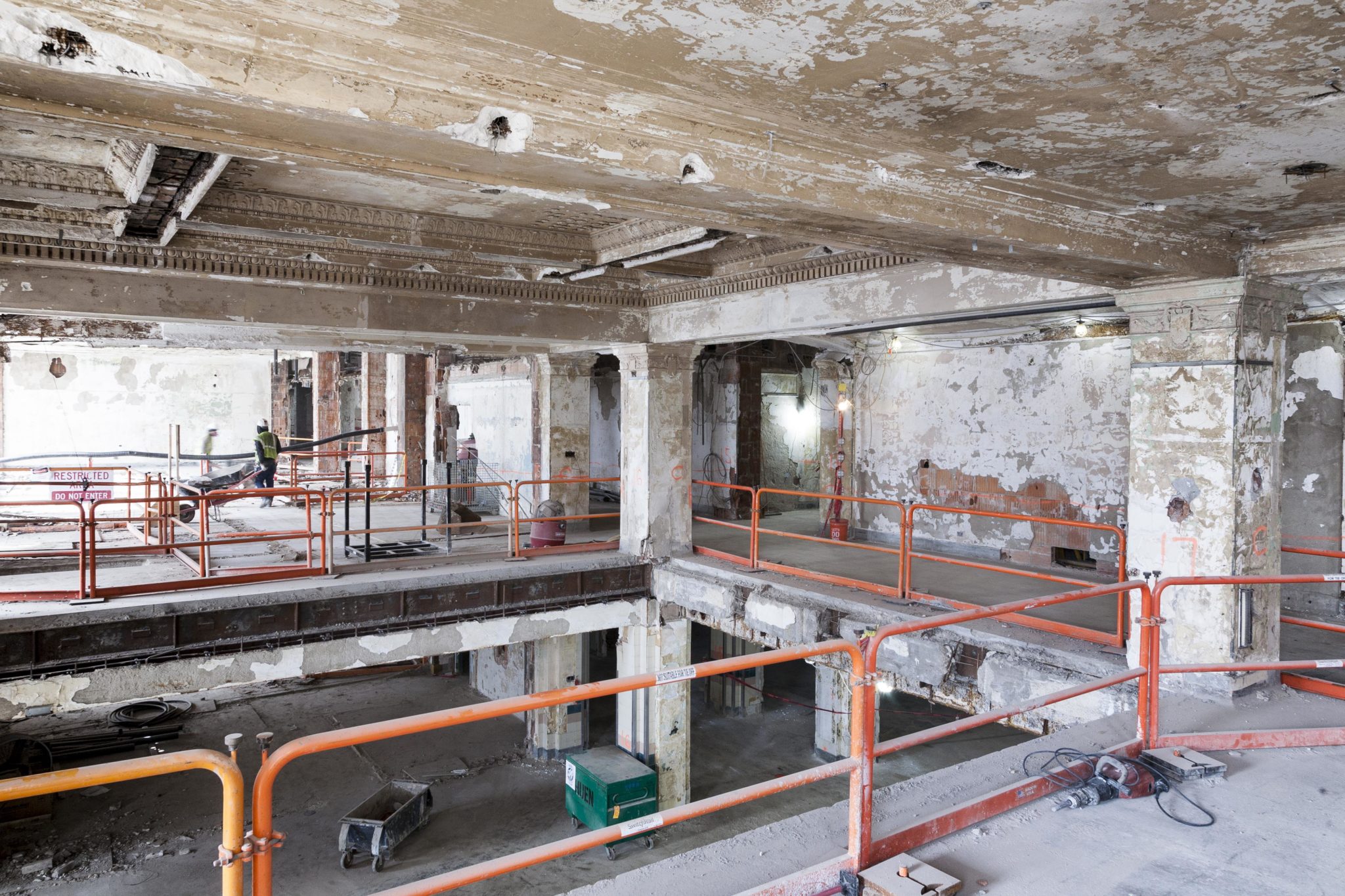Threat at Time of Listing - 2005
In 1998, John Stronger County Hospital broke ground on a new $550 million construction just south of the historic Cook County Hospital. Although the county would first spend millions on asbestos cleanup, it planned to raze the hospital by 2003 and build a new park on the site. Meanwhile, the master plan called for the existing tree-filled park to be replaced with another new building – a use for which had yet to be defined.
Landmarks Illinois quickly pushed for the consideration of other uses for the historic building, meeting with local officials to encourage a feasibility study that would help determine the reuse potential of Cook County Hospital. Landmarks Illinois also listed Cook County Hospital on its Most Endangered list for the first time in 2001 to help bring public attention to the issue. Such advocacy efforts convinced the Cook County Board to delay the 2003 demolition. The fate of the hospital, however, remained far from certain, leading Landmarks Illinois to list the structure on its Most Endangered list three additional times in 2003, 2004 and 2005.
In 2003, after urging the county for several years to consider reuse options, Landmarks Illinois released its own Reuse Plan for Cook County Hospital. It called for private redevelopment of the building and included detailed plans and cost estimates for the restoration work. The plan was based on in-depth conversations with developers, architects and market specialists, all of whom agreed that “throwing” away the former Cook County Hospital made poor economic sense. The report concluded that the steel-frame building remained structurally sound, and its distinctive layout lent itself well to a range of uses. Further, a wide variety of preservation and affordable housing incentives, plus the savings from not having to demolish the former hospital, could be used to make up the difference between rehabilitation costs and income. Landmarks Illinois met with every member of the Cook County Board to share these findings, highlighting the economic development potential and cultural importance of this landmark building.
Over the following years, Landmarks Illinois continued to advocate for reuse and stave off new efforts toward demolition. LI testified before the Cook County Board, prepared revised reuse plans, provided examples of other hospital reuse models successful throughout the nation, met with county and local officials, wrote Op-Eds and worked with the media to bring attention to the plight of this “Great Lady of Harrison Street.” Landmarks Illinois also joined with local advocates and supportive county board members to help add Cook County Hospital to the National Register of Historic Places in 2006, enabling the use of Federal Historic Tax Credits for redevelopment.
(Photo credit: Liz Chilsen)




